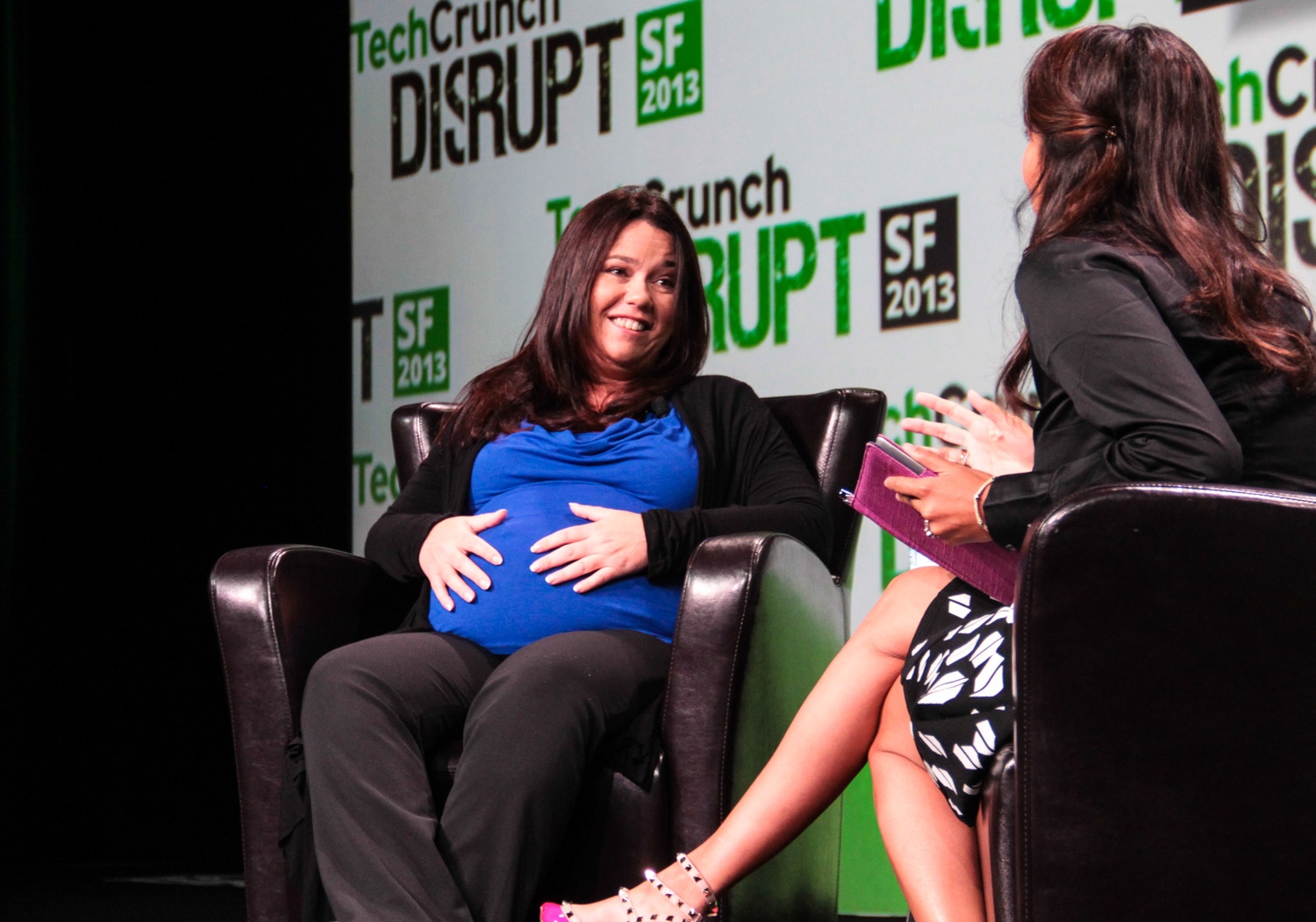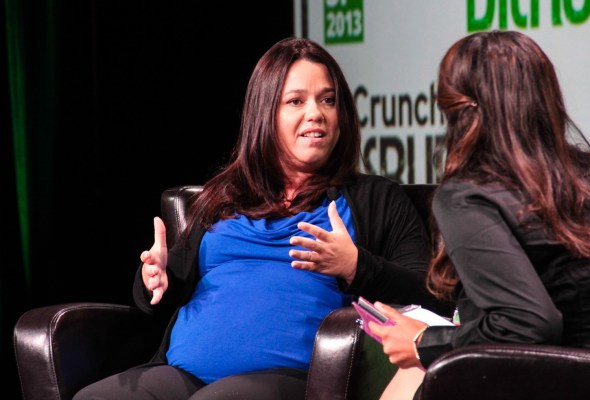Adi Tatarko, the CEO and co-founder of Houzz, the fast-growing online platform for home remodeling and design, took the stage at TechCrunch Disrupt SF this morning to discuss the company’s past, present and future with our own Leena Rao. Tatarko, who co-founded the company with her husband Alon Cohen, stressed how important bootstrapping the company was, but also how finding the right mentors and investors helped them to scale it once they had a good base in place.
They founded Houzz to scratch a very personal itch. She did not really want to start another company, but things just grew organically. “We wanted to remodel and design our house and the tools to do it weren’t there,” she told Rao. At the time, Tatarko and Cohen had just bought a house in Palo Alto. “We had big dreams about how fun it would be to renovate it, but it was a nightmare.” This was about three years ago and they weren’t able to find the right tools to get inspiration and find the right contractors to turn their vision into reality.
For a long time after this, Houzz was just “a fun project,” Tatarko said. “We were very, very passionate about it. It was great. At some point, we just felt it would be very hard to scale this.” Still, she argued that “bootstrapping was the best thing that ever happened to us.” Too often, she argued, “entrepreneurs spent the first six months or a year chasing investors. They go out there, they create presentations and meet investors.” But then the investors tell them to go and change their presentations and do it again. “But why do that?” Tatarko asked. “Why not spend the first couple of months creating a product that people use and love.”

Houzz, of course, had the advantage of having Sequoia come to them (after Oren Zeev led the company’s first $2 million funding round in 2010). At first, the Houzz team didn’t really want to take money, Tatarko told Rao. “Bootstrapping meant we were running a very lean company and didn’t need to take an investment.” At some point, they realized that to scale, they would need to not just take outside money but also find the right mentors. Once Houzz decided to work with Sequoia, Alfred Lin, the former chairman of Zappos.com joined the Houzz board. Asked about why they decided to work with Sequoia, Tatarko noted that “it didn’t feel like Sequoia was going to change how we worked.” Instead, the VC firm told them to just “do what you need to do and we will support you.”
Houzz, it’s worth noting, now has 120 employees and a very flat organizational structure where everybody has the same job title.
As for herself and the challenges of running a startup with her husband, Tatarko noted that it’s been relatively easy, but that work-life balance can be a challenge. “We made a decision to do both, so you have to give up other things. Because I’m a mom, it forces me to focus — both at home and work — on the things that really matter. The company is always in your mind, but you learn to balance this.”
Tatarko said that the site continues to grow rapidly. It now features more than 2 million photos (up from 1.2 million just a few months ago), for example and it’s paid program for professionals quickly expanded from just a dozen cities to over 420 markets today. “For us, monetization always came after user experience, and that helped us monetize later on,” she told Rao. “You can’t buy love. You have to create an experience that people love and need.”
Looking ahead, it looks like Houzz will likely focus on the international market. Currently, 80 percent of Houzz users come from the U.S. and Canada, but the company has plenty of users around the world and this kind of expansion would be a natural step for the company.
Backstage Interview
